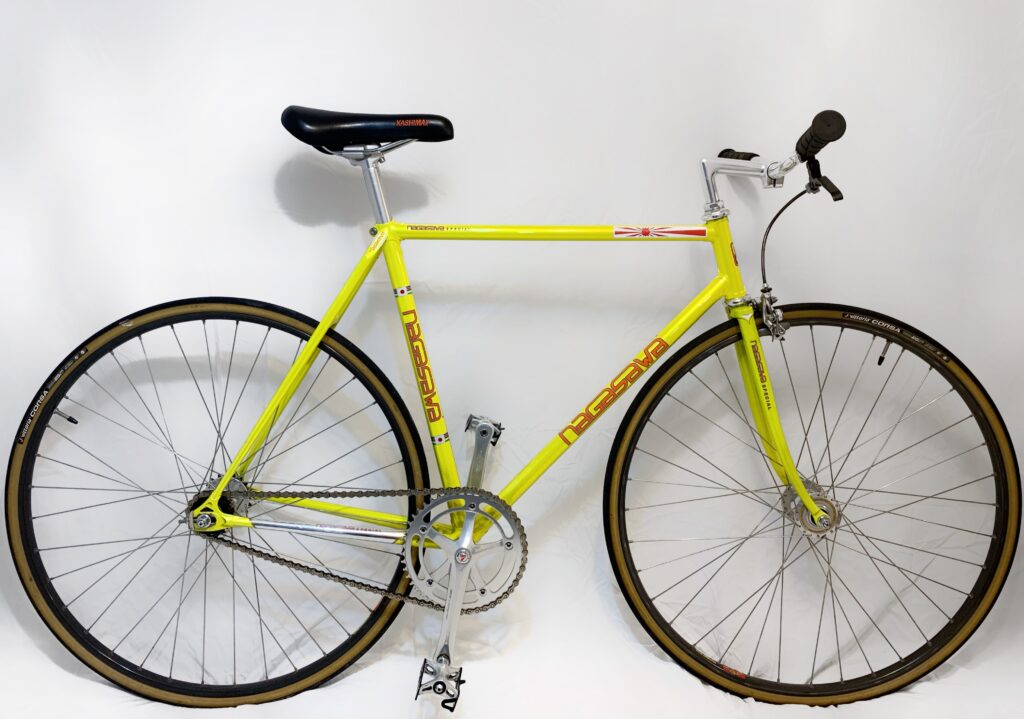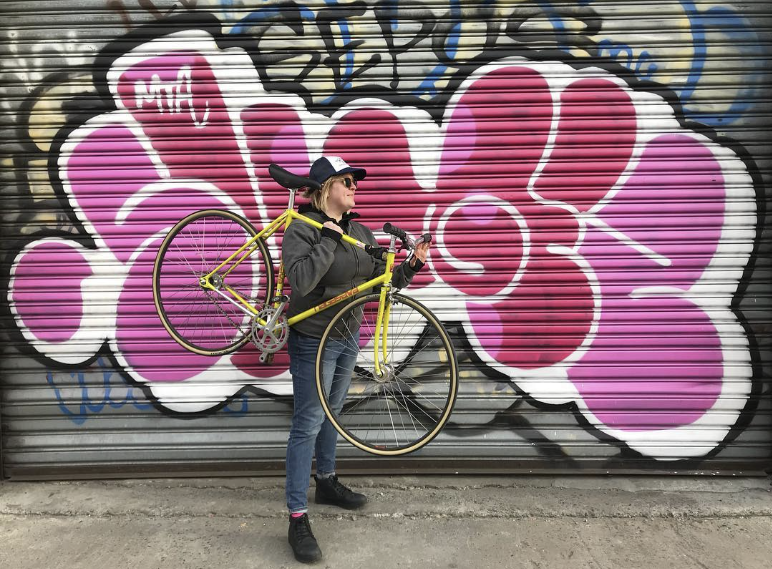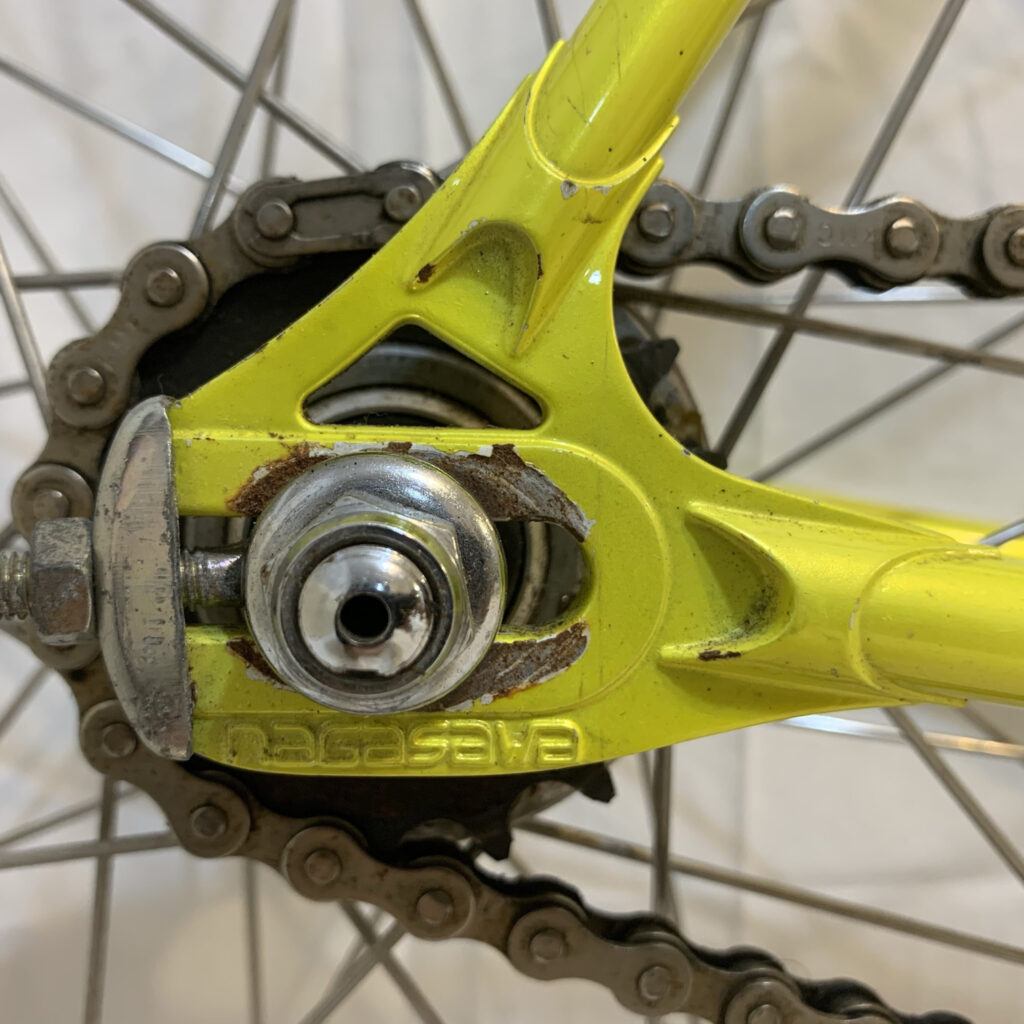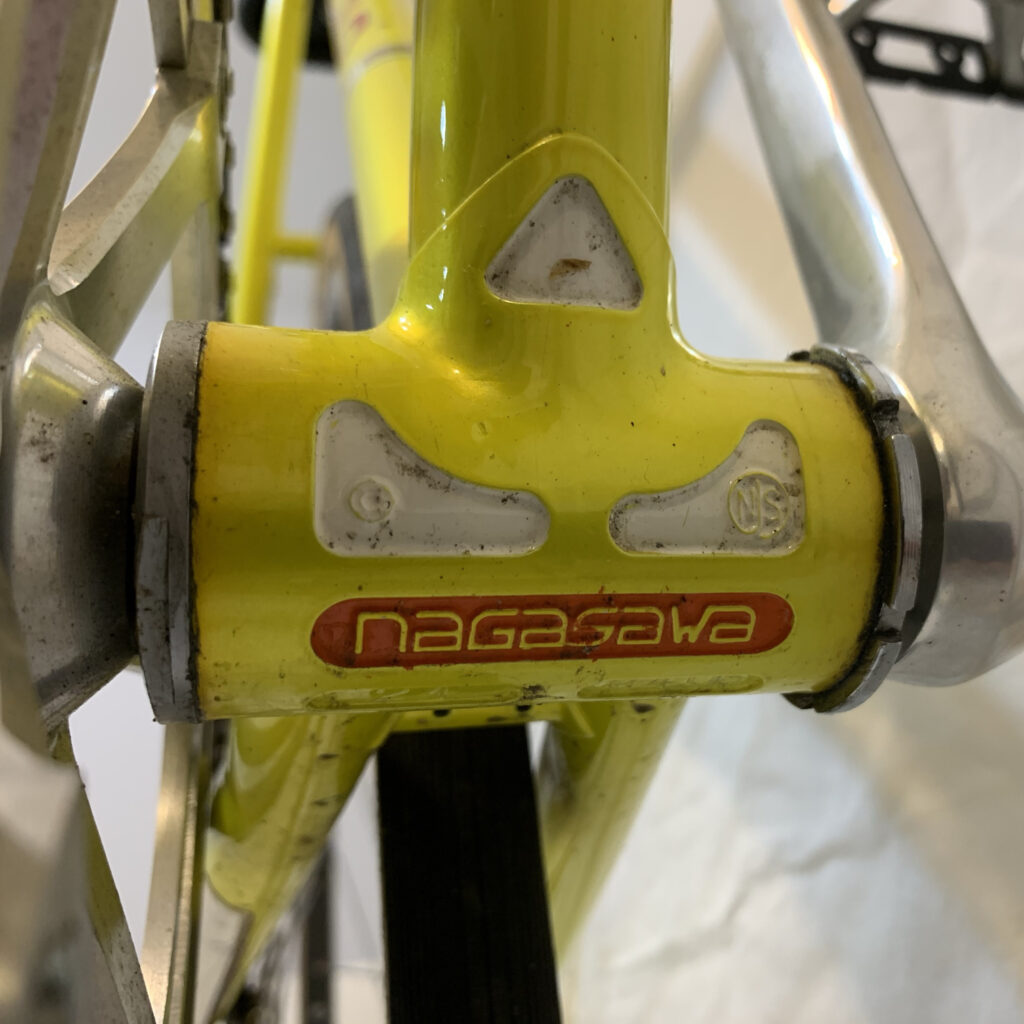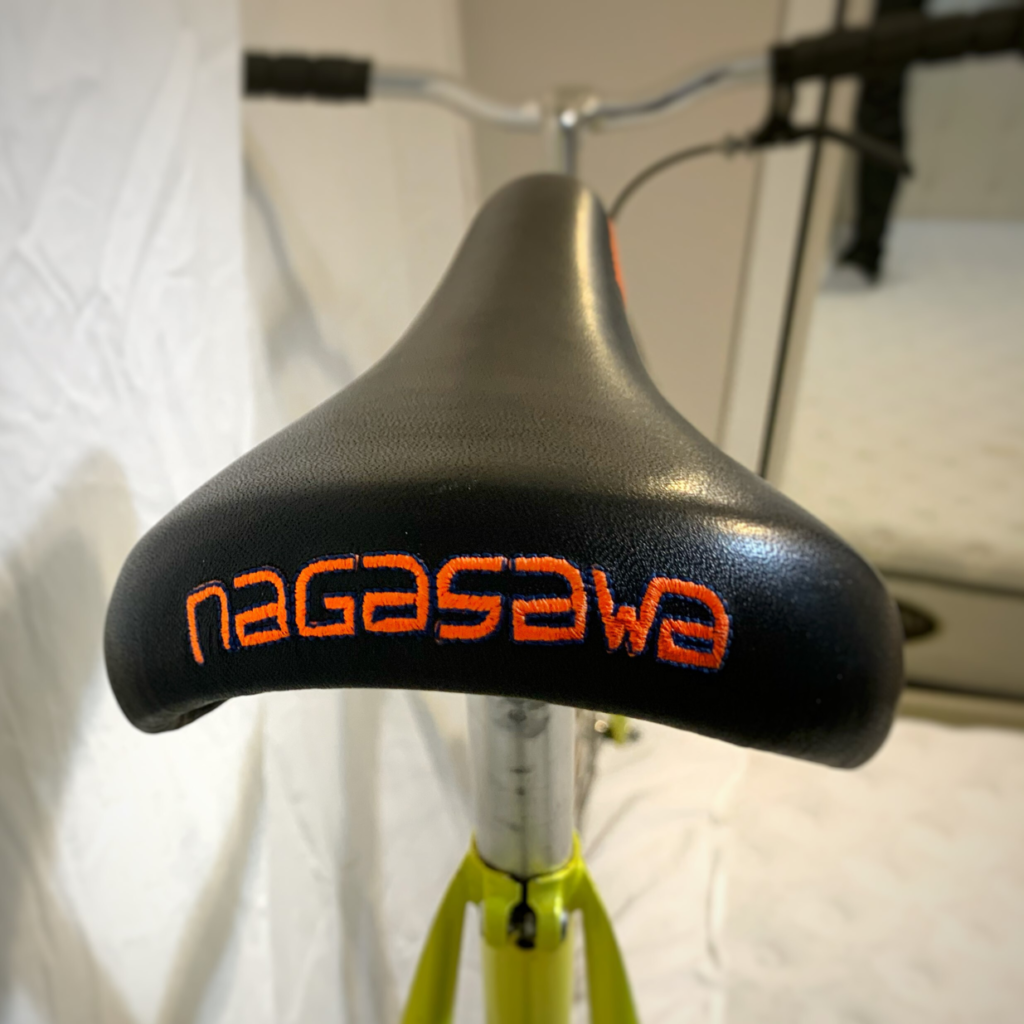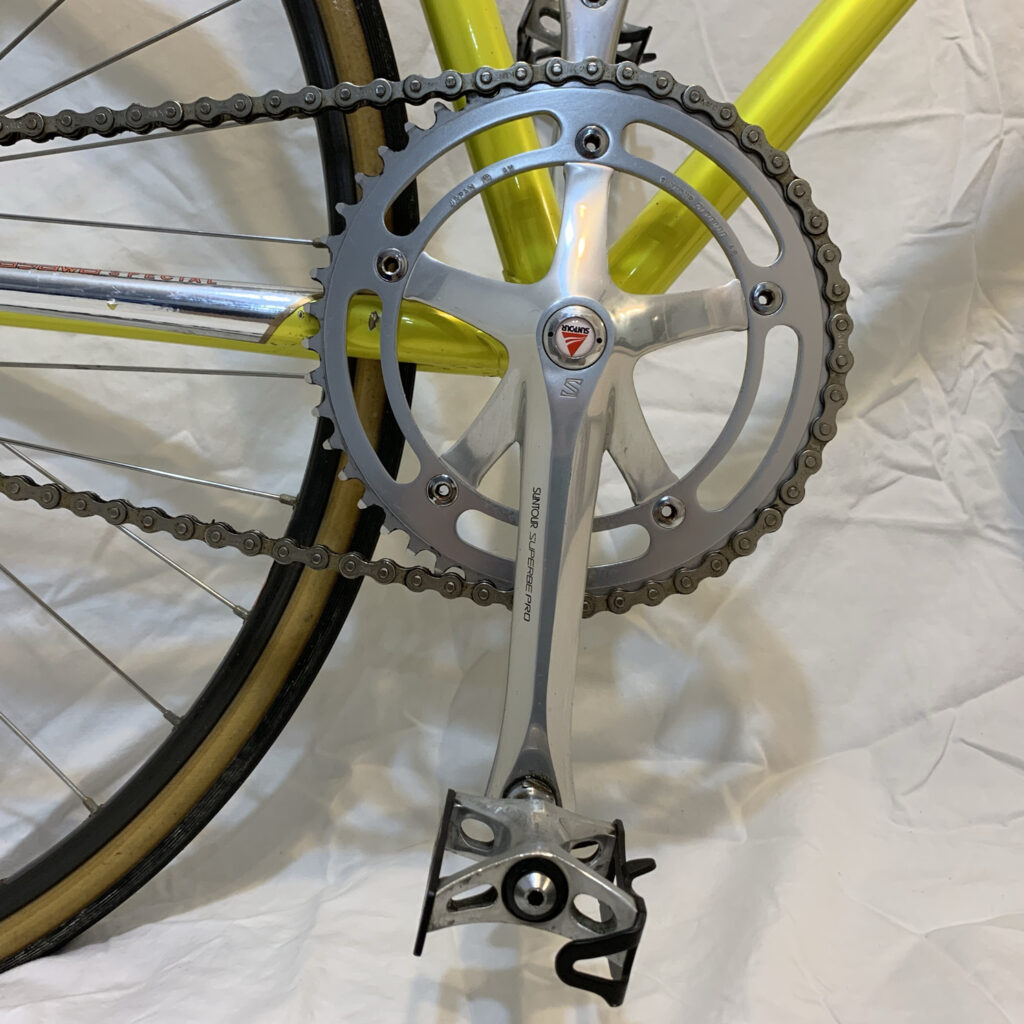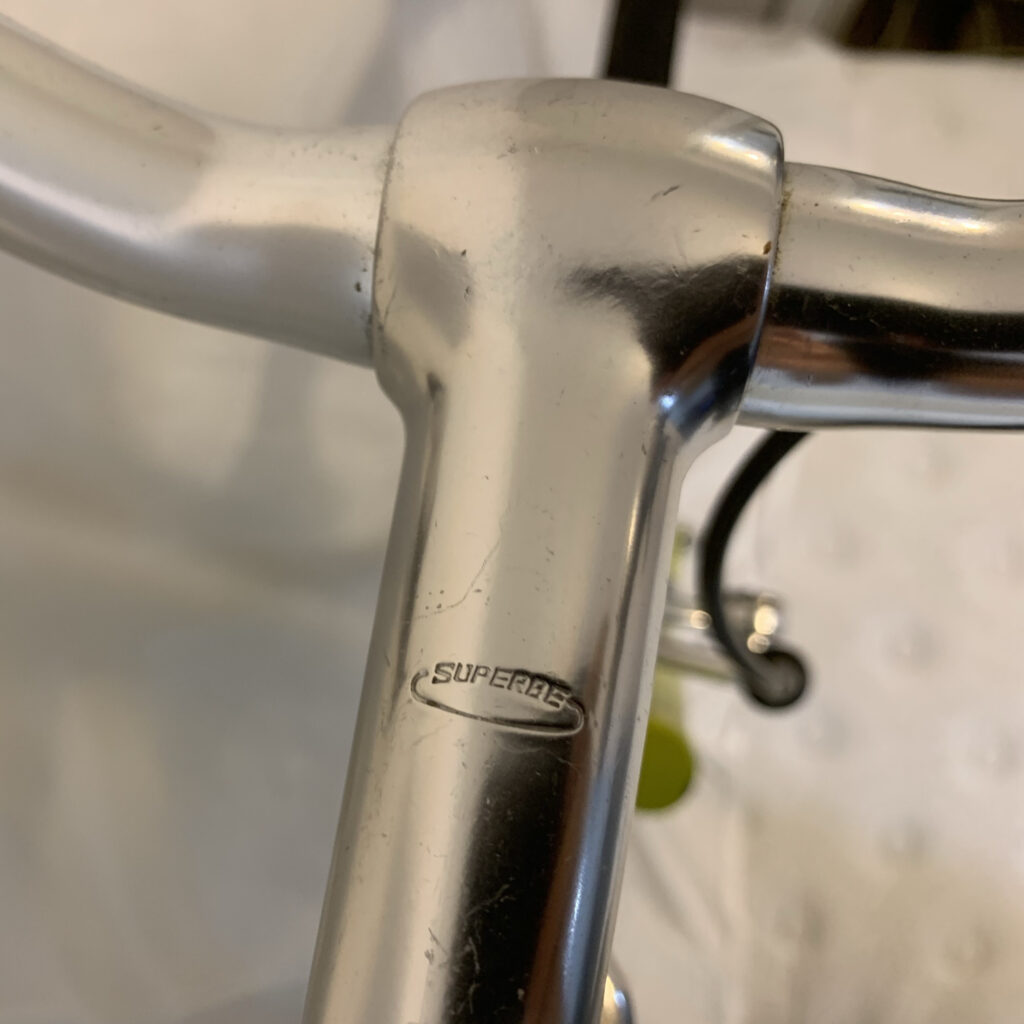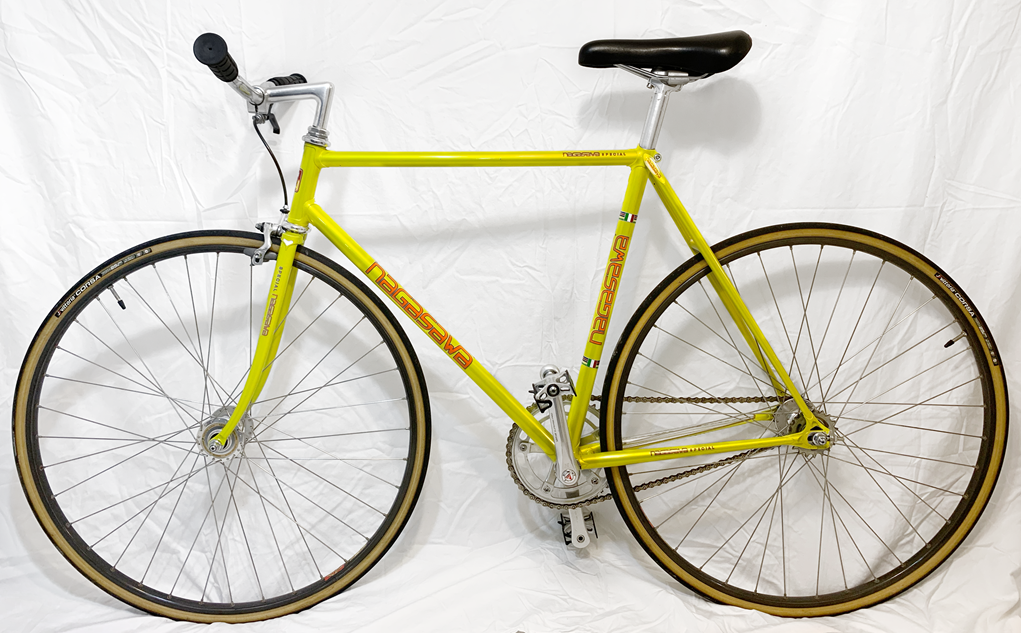In December of 2021 I wrote about a Nagasawa track bike I restored. It was actually my second Nagasawa; this article is about my first one. I acquired it in early 2017 as a lucky eBay find; only $800 complete! Based on the serial number, it was made in 1984, and I think it had been repainted at least once in its life, since the paint was in excellent condition. It was built up with cheap parts which I quickly discarded, opting instead for an all-Suntour Superbe Pro track build. I also had an additional challenge: I don’t ride brakeless fixed in the streets, but I also did not want to defile one of Nagasawa-san’s forks by drilling it for a brake. Instead, I purchased a fork from a different NJS bike that had already been drilled, and which used the same fork crown and dropouts as the Nagasawa. I acquired new decals and sent it off to Allan Wanta, who did a marvelous job matching the pearlescent yellow paint of the original. Read on for more info on the build, plus a cool interview with Nagasawa-san from 1983!
I had always wanted an NJS track bike, but between the cost and not riding brakeless, had never owned one. Having solved those two problems and in procession of a frame made by the most highly-regarded NJS frame builder, I rode my new Nagasawa all over NYC throughout 2018 and 2019. In doing so, I learned quickly that you can take the bike out of the track but you can’t take the track out of the bike. Nagasawa-san’s frames use robust, stiff tubing for maximum power transfer and the aggressive geometry needed to win professional races. These same attributes do not translate to a pleasant ride on city streets. While very fast and nimble, I found it also to be a bone-jarring ride on the broken, potholed streets of Brooklyn.
I’m one of those purists who thinks NJS track bikes should be built with NJS components, and of course I have to make it more challenging by wanting to use parts that all come from a particular group set as opposed to “mixing and matching”. In that case, the options narrow down to Shimano Dura Ace Track 7600, Suntour Superbe Pro Track, or Campagnolo. Campagnolo’s NJS-branded parts are extremely rare and command ludicrous prices when they appear, so I wrote that group off. $800 for a Campagnolo NJS pista headset where the only difference from a regular Campy pista headset is the NJS stamp is silly. I suppose one could say that about a lot of vintage bike parts, but I have to draw the line somewhere. Suntour Superbe Pro track parts are less rare than Campagnolo NJS, but moreso than Shimano Dura Ace. I personally think they look better, as well, so down the Suntour rabbit-hole I went again!
Looking at the photos above, a knowledgeable collector will notice immediately that two of the four parts shown are not for the track. Being a cheeky completist, I just had to have a Suntour Superbe Pro stem and front brake, even though these components are for road bikes only. The stems are quite hard to find these days, but here’s an insider tip: it’s just a rebranded Kusuki Medallion 1000. If you can live without the little “Superbe” stamp, you can “get the look for less”. The cranks, hubs, pedals, seatpost and headset were all legit NJS Suntour Superbe Pro components. The handlebars were NITTO risers (not NJS) and the saddle was a special collaboration by Kashimax and Nagasawa.
As cool as this bike was, over time I found myself preferring my own handmade fixed gear bike. The tubing I used was a bit more forgiving and the geometry slightly less aggressive, making it a more comfortable ride. It also wasn’t the same potential theft magnet as a bright yellow Nagasawa. When the pandemic hit in early 2020, I ended up selling the bike, with both the original un-drilled track fork and drilled replacement fork, to a gentleman in Hawaii. I hope it’s still tearing up road around the islands to this day. I’ll wrap this article up with a final photo of the bike, shot along the East River waterfront in Williamsburg, Brooklyn. If you liked this article or are a fan of Nagasawa bikes, please leave a comment!

